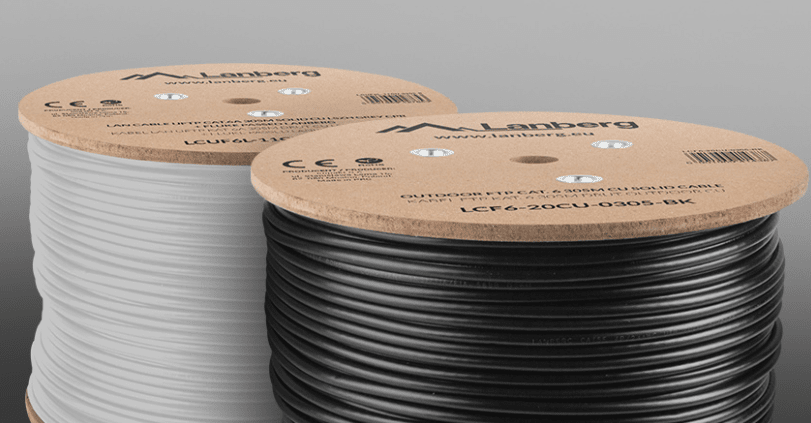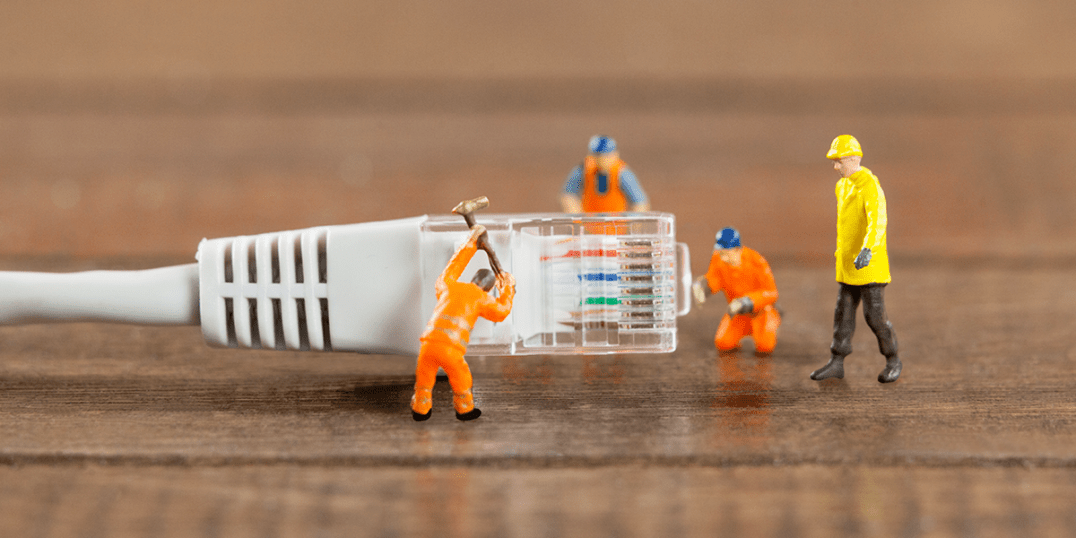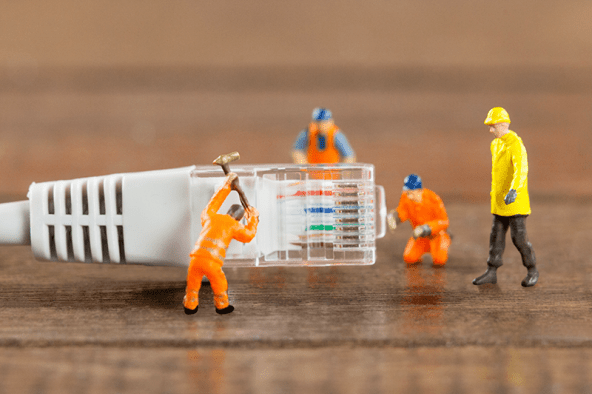Outdoor LAN cables - main types and applications
Indoor and outdoor LAN (Local Area Network) cables are basic components of network infrastructure, designed for different environments and requirements. Although they share the common purpose of data transmission, the differences between them are due to their design, protective coating and resistance to environmental conditions, which significantly affects their applications.
Outdoor and indoor LAN cables - under what conditions do we use them?
Indoor LAN cables: These cables are commonly used in buildings. Built without having to withstand harsh environmental conditions, they tend to be more flexible and lightweight. They lack the robust protective coating found in outdoor cables, making them less expensive. However, this means that they are not suitable for exposure to moisture, extreme temperatures or UV radiation. Indoor LAN cables typically run through ceilings and walls in office buildings, connecting workstations, printers and other internal network devices.
Outdoor LAN cables: Designed to withstand the rigors of the outdoor environment, these cables are reinforced with a high-quality protective coating. They are resistant to water, varying temperatures, UV radiation and sometimes even rodent damage. This protective coating, however, makes them stiffer and usually more expensive than their indoor counterparts. Their durability makes them ideal for connecting network devices between buildings, supporting surveillance systems or networking outdoor devices. In some configurations, they are also used for ISP (Internet Service Provider) connections, linking the service provider's facility to the user's network.
Choosing the right type of LAN cable for each scenario is critical, as using indoor cables outdoors can lead to network failures due to environmental damage, while using outdoor cables indoors can be cost ineffective and excessive for the application. Some protective coatings used in outdoor cables can also emit toxic substances in the event of a fire, which is an additional argument for not using them in indoor installations. By understanding these distinctions, network administrators can ensure reliable and cost-effective data transmission in both indoor and outdoor applications.

Which outdoor LAN cable sheath for which applications?
External LAN cables come in two main types: gelled (or wet) and dry. The key difference between the two lies in their design and the environments for which they are intended.
Gel-filled cables:
- Composition: These cables are filled with a hydrophobic compound (usually a petroleum-based gel) that occupies the spaces between the twisted pairs of wires inside the cable sheath.
- Purpose: The gel's main purpose is to block the ingress of water, preventing it from entering the cables, even if the outer insulation is damaged. This is particularly valuable in environments where the cable may be submerged or exposed to high levels of moisture.
- Use: Because of their water resistance, gel-filled cables are ideal for direct burial underground, use in wet conduits or in areas prone to flooding.
- Handling: These cables can be more difficult to handle due to the gel, requiring additional cleaning during installation and maintenance, and sometimes special connectors to ensure a clean and reliable connection.
Dry cables:
- Composition: Dry outdoor cables use water-blocking tapes or swelling powders to prevent water from entering; they may also rely on a tightly constructed sheath that is difficult for moisture to penetrate.
- Purpose: These cables are designed to provide moisture and water protection without the problems associated with gel.
- Use: They are suitable for outdoor use in a variety of environments, but may not be the best choice in situations where they may be submerged or exposed to consistently high levels of moisture.
- Handling: They are generally easier and cleaner to install than gel cables, with no special cleaning or splicing required. However, they are typically and more rigid than gel counterparts.
When choosing between gel and dry cables, consider the specific environmental conditions the cables will be exposed to, as well as the potential need for future maintenance or adjustment. Both types are designed for the durability required for outdoor use, but the best choice depends on the balance between the required level of moisture protection and ease of handling.
Gel cables appear to be the optimal solution for direct burial of cables in the ground and in environments particularly exposed to moisture. "Dry" cables, on the other hand, thanks to their high resistance to UV rays and external damage, will find use in conditions of exposure to strong sunlight, such as installations on building facades. Of course, when choosing the right solution for an outdoor installation, other parameters of the cables should also be taken into account, such as their capacity, but this is another issue, which we address in another article.







